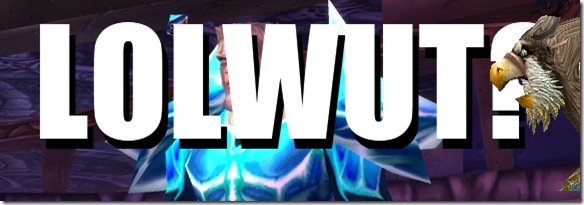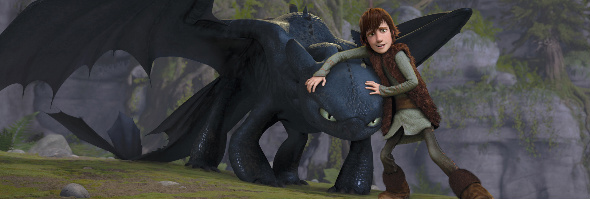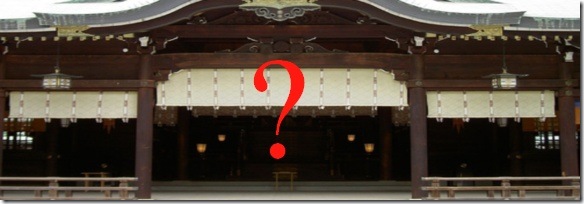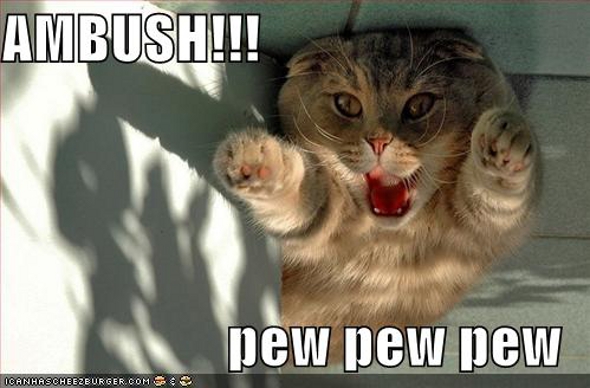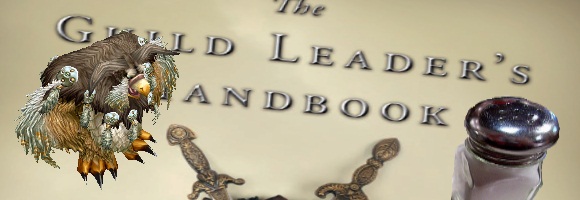Last week I talked about what I thought the Ruby Sanctum had to live up to. I reminisced about the encounters that made Wrath’s raiding scene fun for me. Thanks for chipping in with your thoughts too folks – feel free to keep them coming and do the same this week. I’ll never forget my own favourites and if the Ruby Sanctum manages to come close to them then it’s on fire.
… Sorry about that one.
Anyway. This week I’m intrepidly heading back down memory lane to the dark alleys where the worst encounters lurk. The ones that caused me to daydream about throwing the computer out of the window whilst we recovered from yet another wipe. Or the ones that encouraged me to try taping my cat’s paw to the keyboard while I put the kettle on, because we just had to get through the encounter to get to the Fun Stuff ™. Worst of all, the encounters that should be truly inspiring but one design flaw let it – and me – down.
Beware, Ruby Sanctum. Here there be monsters. Quite literally. If you find yourself amongst them you’ve Done It Wrong.
5. Faction Champions – Let me make one thing clear: if I want to PvP I’ll go to a battleground or do some arenas. It’s great that they took the Priestess Delrissa fight from TBC a step further. That was chaotic fun. The ‘fun’ part translated badly into a situation involving 10-25 people, many of whom (including myself) are not ardent PvPers with a desire to hone PvP tactics. I’ve found that trying to organise (or be organised for) PvP-style opponent management when the 9-24 people you’re working with are either loyal PvEr’s or PUGers is just a headache. Don’t do it again, Blizz.
4. Lich King – I know I know. It’s the last fight of the expansion, of course it’s special, right? Special isn’t always good. First oversight: the quality of the dialogue between Arthas and Tirion before the fight. It’s frankly shoddy. If I’m being crude, most of it also has homoerotic undertones that I’m sure Blizzard didn’t intend. Go and read it if you don’t believe me. A ‘skip intro’ button as with Deathbringer Saurfang would have been really useful here. And if I’m being picky – might as well be – Arthas’s girth makes me think he’s only really a threat to pies.
But my main problem with this encounter was its mechanics. If you ask for tactics in any Wrath encounter at least one person will say “Don’t stand in the fire”. It is a joke but people say it through pursed lips. They’re tired of it being the basic tactic for most fights. The Lich King encounter is just that: you’ll be fine if you don’t stand in the fire black goo and move at the right times. Sadly, this really makes it the fight designed to finish Wrath off.
3. Sindragosa – I included Sapphiron in my top five last week because when the fight mechanics were fresh when we first edged into his lair. That didn’t mean I wanted a near-identical fight later in the game. Not only are the mechanics a rip-off but the boss looks the same (though has undergone a gender change since we saw him in Naxx). Sindragosa’s fight mechanics do have a different twist to Sapphiron’s. I just resent peddling the wheel like a good guinea pig to get through phases 1 and 2 in order to reach that fun part of the fight which would probably kill my group so I could do it all again. I can’t understand why having players repeat two long phases full of easy mechanics because the fun, difficult and adrenaline-inducing stuff is squeezed into a mad 30 seconds at the end got past – or to – the PTR.
2. Malygos – This encounter has a lot going for it. I quite enjoyed the large blue dragon flying around the room taunting during wipe recovery. I mean, for an arrogant dragon, it sounded believable. The fight mechanics were interesting up to a point – working with sparks provided an extra layer of challenge and the whole of phase 2 was particularly fun given the first character I took to Malygos was a melee DPS.
What? I’ve just praised it to the heavens? But wait, this encounter does deserve to be high on this list. Why? Phase 3. Partly because whilst being dropped on to a dragon looks cool, I don’t appreciate a game effectively saying “right! Quick time event. You need to already know and/or mind-read which dragon abilities to use while moving in 3d space – and we mean moving, ‘cos there are fires to not stand in!” But even that isn’t the real problem. That’d be the lights. There are too many in phase 3. They flash. They move. The pretty colours aren’t pretty so much as neon. I know people who get headaches from them and I’ve been in raids which have wiped shortly after the healer said “arghargh the lights.”
1. Razuvious – “Bring the player not the class” was Blizzard’s tagline regarding raiding in WotLK. A raid with any composition of classes can defeat any encounter? Great idea. So why did I often spend hours fishing whilst waiting for my Naxx25 groups to try to find two shadow priests for Insdtructor Razuvious? And then why did many of those groups collapse like a pie on Arthas’ plate after we wiped once on Razuvious? Because the hidden clause was that not just that we need two priests – and until it was hotfixed you need two with +hit gear – but to narrow it down further any group needed two who know how to mindcontrol-juggle-tank. Razuvious was an interesting fight mechanic spoiled by a deviation from Wrath’s goals, which would have just been more fun for everyone if any class could have stepped up to the orb in 10 and 25 man.
So providing the Ruby Sanctum doesn’t force us to PvP under a disco ball as a raid composed of 10 paladins – after a dodgy scene we’ll cringe at fifty times – it should be fine. Bring on the fire.
What do you think – what are your very worst memories of any WoW encounters, and why?
This is an article by Mimetir, an owl (and resto shaman) of a raid leader on The Venture Co. (EU) You can find my twitter feed here.
